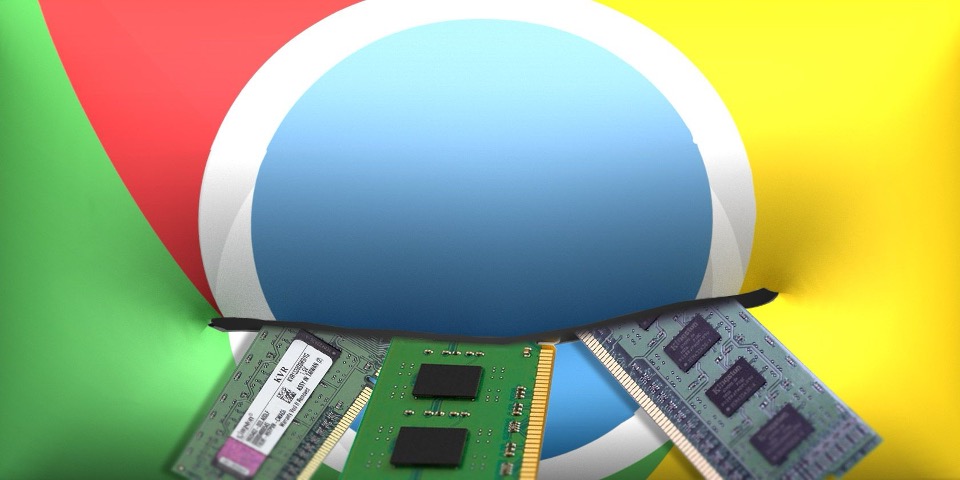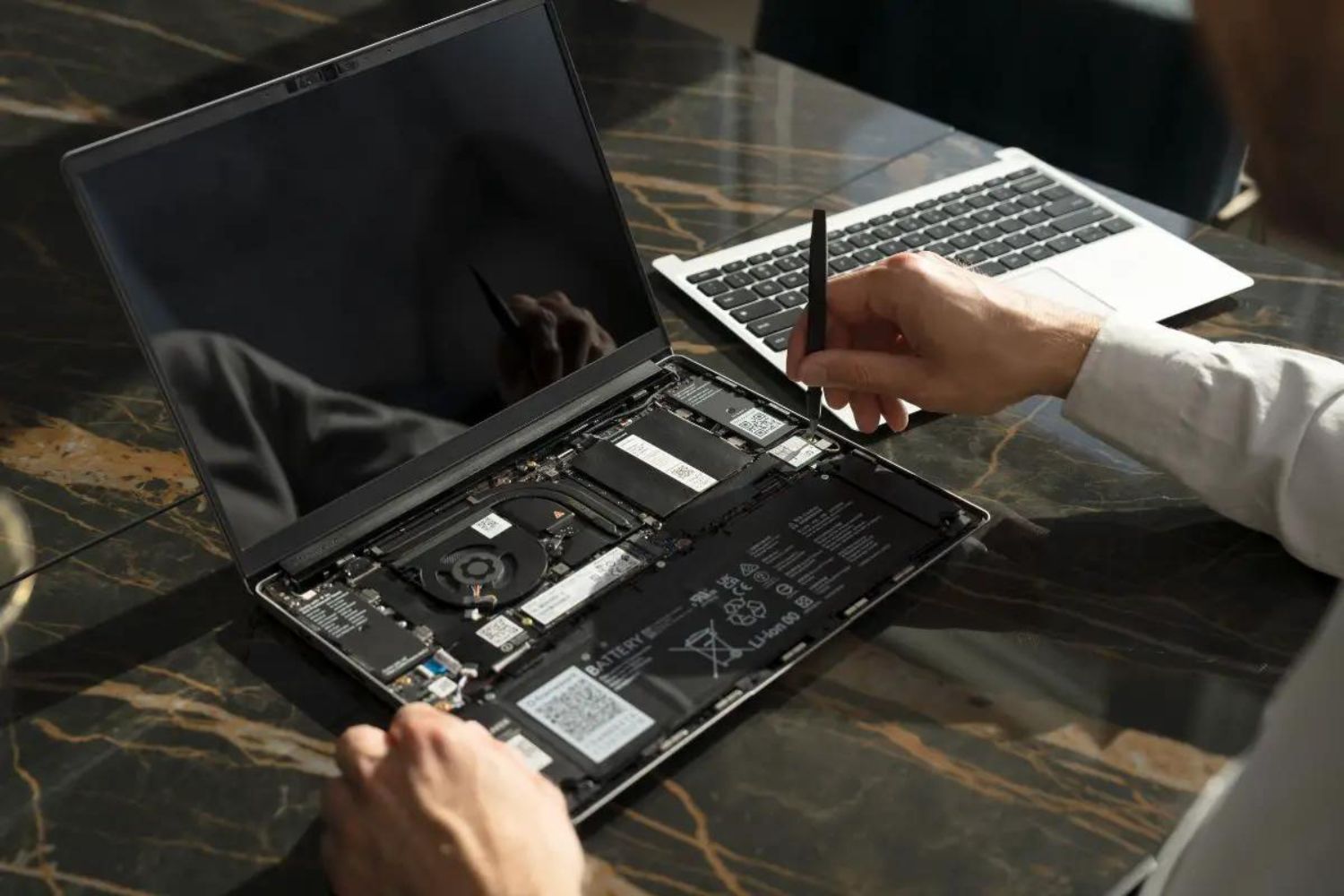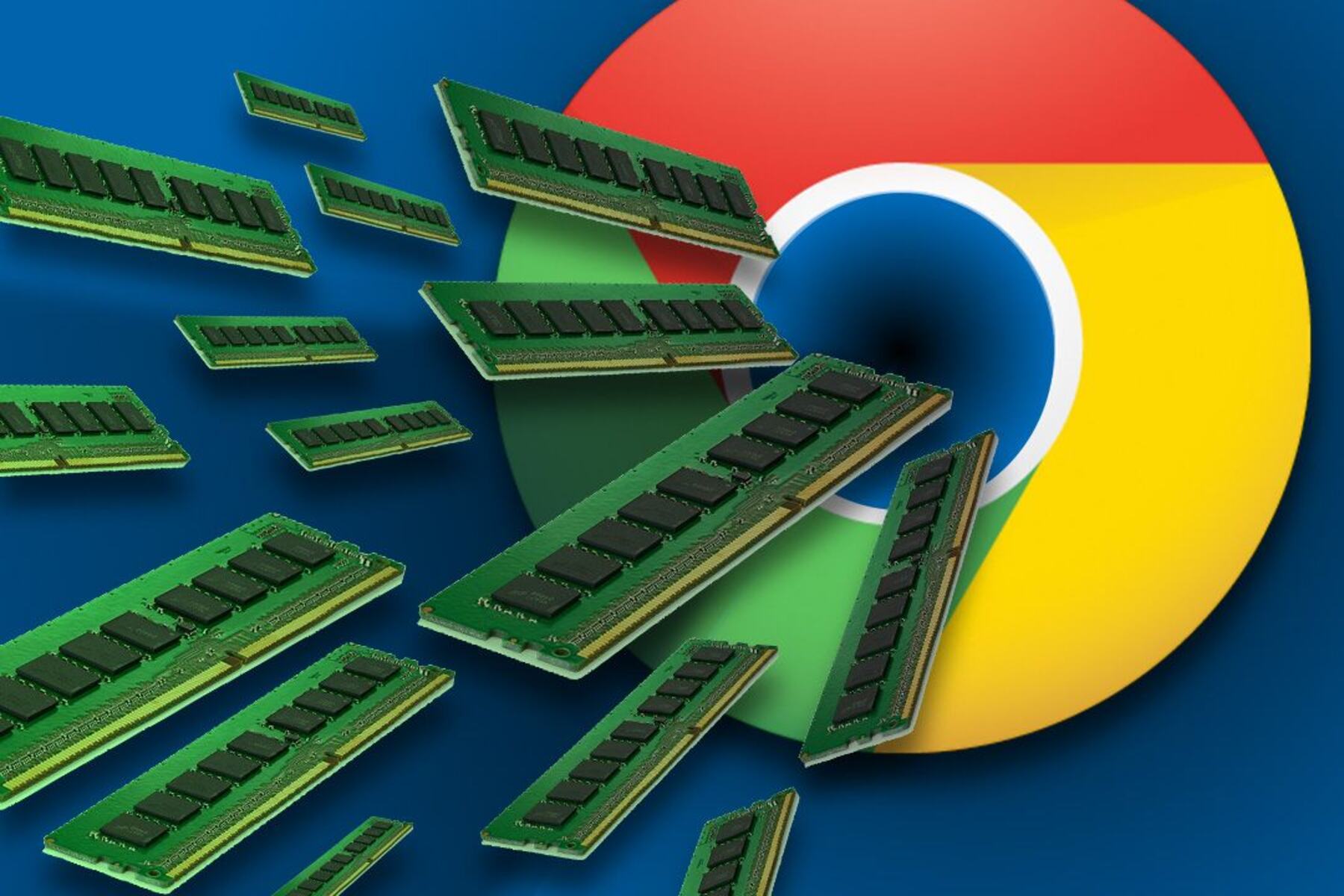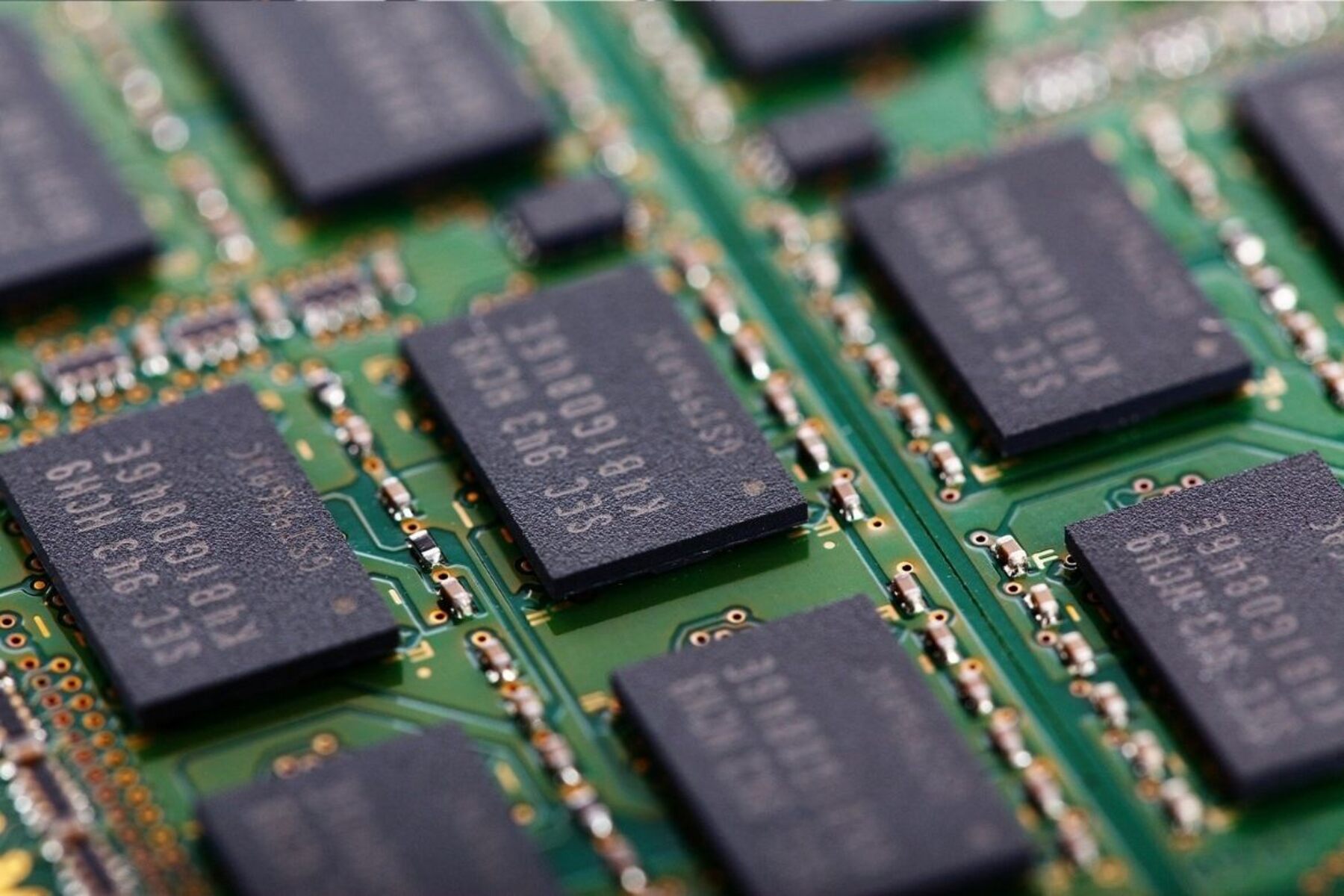Introduction
Have you ever noticed that your computer seems to slow down when using Google Chrome? One of the main culprits behind this sluggish performance is Chrome’s notorious RAM usage. RAM, or Random Access Memory, is a vital component of your computer’s hardware that stores data that is actively being used by running programs. While Chrome is well-known for its speed and efficiency, it has also gained a reputation for being a memory hog.
RAM plays a crucial role in the overall performance of your computer. When you open a program or a website in your browser, the data related to that program or website is loaded into RAM for quick and seamless access. This allows for faster multitasking and smoother user experience. However, if a program uses up an excessive amount of RAM, it can lead to performance issues, such as slow response and system freezes.
Google Chrome, being a powerful and feature-rich web browser, is designed to provide a fast and interactive browsing experience. However, its robust functionality comes at a cost: high RAM usage. Chrome is known for utilizing a significant amount of RAM compared to other browsers. While this may not be a problem for users with ample RAM capacity, it can be problematic for those with limited resources.
There are several reasons why Chrome uses up so much RAM. First and foremost, Chrome is built to handle multiple tabs and processes simultaneously. Each tab and process requires a certain amount of RAM to function properly. Additionally, Chrome also allocates RAM for various extensions, plugins, and features, such as JavaScript, which further contribute to its memory consumption.
Reducing Chrome’s RAM usage can help improve the overall performance of your computer and ensure a smoother browsing experience. In the following sections, we will explore the factors that contribute to Chrome’s high RAM usage and provide some tips on how to minimize it. So, if you’ve been wondering why Chrome seems to be a memory hog, read on to find out more and discover ways to optimize your browsing experience.
What is RAM and why is it important?
Before diving into why Chrome uses up so much RAM, it’s important to have a basic understanding of what RAM is and why it plays such a vital role in computer performance.
RAM, or Random Access Memory, is a type of computer memory that is used to temporarily store data that is actively being accessed by the computer’s processor. Unlike the hard drive or solid-state drive, which are used for long-term storage, RAM is much faster but also temporary. When you open a program or a website, the data related to that program or website is loaded into RAM for quick and efficient access.
RAM is important because it allows for faster data access, which directly impacts the overall speed and performance of your computer. The more RAM your computer has, the more data it can store in memory, reducing the need to rely on slower storage devices for frequent data retrieval. This results in faster multitasking, smoother application launches, and seamless switching between programs.
When it comes to web browsers like Chrome, RAM is particularly crucial. Browsers are designed to handle multiple tabs and processes simultaneously, each requiring a certain amount of memory to function properly. When you open a new tab or visit a website, the data associated with that tab is loaded into RAM to ensure quick access and smooth browsing experience.
Moreover, modern websites have become increasingly complex, with rich media, interactive elements, and sophisticated scripting languages. These elements can put a strain on your computer’s resources, especially RAM. Inadequate RAM capacity can lead to slowdowns, freezes, and even crashes, making it essential to have enough memory to accommodate the demands of modern web browsing.
To sum up, RAM is a crucial component of your computer that allows for quick and efficient data access. It plays a vital role in the performance of web browsers like Chrome, enabling smooth multitasking and seamless browsing. Understanding the importance of RAM in the context of web browsing is key to comprehending why Chrome uses up a significant amount of memory, as we will explore in the following sections.
How does Chrome use RAM?
Chrome’s memory usage is often a topic of discussion among users who notice its impact on their computer’s performance. To understand why Chrome uses up so much RAM, it’s important to explore how the browser manages memory.
Chrome utilizes a multi-process architecture, which means that each tab and extension runs in its own process. This design provides better security, stability, and isolation between different tabs and components. However, it also means that Chrome requires additional RAM to allocate resources for each process.
When you open a new tab in Chrome, it creates a new process specifically for that tab. This approach allows for better isolation, as a crash or issue in one tab won’t affect others. However, it also means that each tab consumes a certain amount of RAM, even if it’s idle.
In addition to the individual processes for each tab, Chrome also uses separate processes for extensions and plugins. These processes ensure that third-party extensions and plugins, which can add valuable functionality to the browser, operate independently and don’t interfere with the core functionality of Chrome. However, this also increases the overall memory usage of the browser.
Another factor contributing to Chrome’s RAM usage is its handling of background processes. Even when you’re not actively using a tab, Chrome keeps those tabs running in the background, consuming memory. This feature is designed to provide quick access when you switch back to a background tab, but it can also lead to higher RAM usage if you have many tabs open.
Furthermore, Chrome also reserves memory for caching web pages, anticipating that you may revisit them. This caching mechanism helps speed up loading times for previously visited websites but can also contribute to increased RAM usage.
It’s important to note that while Chrome may use more RAM compared to other browsers, this approach comes with its advantages. The multi-process architecture enhances security, stability, and isolation between different components, improving the overall browsing experience. However, it does require a trade-off in terms of memory consumption.
In the next sections, we will explore the factors that contribute to Chrome’s high RAM usage and provide some tips on how to reduce it, giving you more control over your computer’s resources and optimizing your browsing experience.
Factors that contribute to Chrome’s RAM usage
There are several factors that contribute to Chrome’s high RAM usage. Understanding these factors can help you identify why Chrome is consuming a significant amount of memory and take appropriate steps to optimize its usage. Let’s explore the key factors:
1. Extensions and plugins: Chrome offers a wide range of extensions and plugins that enhance its functionality and customize the browsing experience. However, these add-ons can consume additional memory as they run in separate processes. It’s important to be mindful of the number and type of extensions you have installed, as each one can contribute to Chrome’s RAM usage.
2. Multiple tabs and processes: Chrome’s multi-process architecture means that each open tab, as well as individual extensions and plugins, run in their own processes. This isolation ensures stability and security but also requires additional memory for each process. Having multiple tabs open simultaneously can rapidly increase Chrome’s memory usage, especially if those tabs contain resource-intensive content such as multimedia or JavaScript-heavy websites.
3. Unused tabs continue to consume RAM: Even when you’re not actively using a tab, Chrome keeps it running in the background to provide quick access when you revisit it. This background running consumes memory, and if you have many tabs open, the overall RAM usage can become significant. Closing tabs that you no longer need can help free up memory and reduce Chrome’s memory footprint.
4. Caching and preloading: Chrome caches web pages and preloads resources to improve loading times and provide a smoother browsing experience. While this caching mechanism can enhance performance, it also uses additional memory to store preloaded data. Sites with heavy multimedia or dynamic content may result in more cached data and, consequently, increased RAM usage.
5. Resource-intensive websites and applications: Modern websites and web applications have become increasingly complex, hosting resource-intensive elements such as heavy graphics, animations, and JavaScript frameworks. These elements can put a strain on your computer’s resources, including RAM. When visiting such websites, Chrome may allocate more memory to ensure smooth rendering and responsiveness.
While these factors contribute to Chrome’s RAM usage, it’s essential to strike a balance between functionality and resource optimization. In the next section, we’ll explore ways to reduce Chrome’s memory footprint without sacrificing essential features and browsing experience.
Extensions and plugins
Extensions and plugins are powerful tools that enhance the functionality of Google Chrome. However, they also contribute to Chrome’s memory usage, as each installed extension or plugin runs in its own separate process. Here are some considerations regarding extensions and plugins that can help optimize Chrome’s memory usage:
1. Evaluate and remove unnecessary extensions: Take a moment to review the extensions installed in your Chrome browser. If you have extensions that you no longer use or ones that serve a very specific purpose but aren’t utilized regularly, consider removing them. To manage your extensions, type “chrome://extensions” in the address bar and press Enter.
2. Limit the number of active extensions: While extensions can be useful, having too many active extensions running simultaneously can significantly impact Chrome’s memory usage. Disable or deactivate any extensions that you don’t frequently use or require for your day-to-day browsing.
3. Use lightweight alternatives: Some extensions offer lightweight alternatives that provide similar functionality without consuming as much memory. For example, there are alternative ad blockers that use less memory compared to resource-heavy ad-blocking extensions.
4. Keep extensions up to date: Keeping your extensions up to date ensures that you have the latest bug fixes and performance enhancements. Developers often release updates to improve memory usage and optimize the efficiency of their extensions. To update your extensions, visit “chrome://extensions” and enable the “Developer mode” at the top-right corner. Then, click “Update” next to each extension that has an available update.
5. Use plugins cautiously: Plugins, such as Adobe Flash Player, can be a significant source of memory usage. Consider disabling or removing unnecessary plugins and use them only when necessary. Chrome natively supports HTML5, which reduces the reliance on plugins for multimedia playback on most websites.
6. Avoid installing multiple extensions with overlapping functionality: Installing multiple extensions that provide similar functionality can lead to increased memory usage. Choose one extension that fulfills your requirements instead of loading up your browser with multiple extensions that perform the same tasks.
By carefully managing your extensions and plugins, you can significantly optimize Chrome’s memory usage without sacrificing essential functionality. Regularly review your extensions, keep them up to date, and choose lightweight alternatives when possible. These steps will contribute to a leaner and more efficient browsing experience.
Multiple tabs and processes
Google Chrome’s multi-process architecture allows for each tab, extension, and plugin to run in its own separate process. While this design provides benefits such as enhanced security and stability, it also contributes to Chrome’s memory usage, especially when multiple tabs are open simultaneously. Here’s an overview of how multiple tabs and processes impact Chrome’s memory usage:
1. Memory allocation for each tab: When you open a new tab in Chrome, the browser creates a separate process specifically for that tab. This enables better isolation, preventing issues in one tab from affecting others. However, each tab requires its own memory allocation, which can rapidly increase Chrome’s overall memory usage, especially if you have numerous tabs open at once.
2. Memory sharing between related tabs: Chrome implements a memory sharing technique called “site isolation” for pages from the same website. This means that multiple tabs from the same website can share memory resources, reducing the overall memory footprint. However, tabs from different websites are still isolated and have their own memory allocations.
3. Impact of resource-intensive tabs: Memory usage varies based on the content and functionality of each tab. Tabs that contain resource-intensive elements such as multimedia, complex animations, or JavaScript-heavy web applications require more memory to ensure smooth performance and responsive browsing. Opening several of these types of tabs can quickly escalate Chrome’s memory consumption.
4. Suspended tabs: To help manage memory usage, Chrome employs a feature called tab suspension, which automatically suspends tabs that have been inactive for a certain period. Suspended tabs consume minimal memory while remaining accessible for quick reactivation upon your return. This feature can help mitigate the impact of having a large number of tabs open simultaneously.
5. Multiple processes for extensions and plugins: In addition to individual processes for each tab, Chrome allocates separate processes for extensions and plugins. This ensures that third-party components operate independently and don’t interfere with the browser’s stability. However, it also increases the overall memory usage of the browser.
Managing multiple tabs and their associated processes is key to optimizing Chrome’s memory usage. Here are some tips to help you efficiently handle multiple tabs:
– Close unnecessary tabs: When you’re finished using a tab, consider closing it instead of leaving it open indefinitely. Closing unused tabs frees up memory and helps reduce Chrome’s overall memory footprint.
– Utilize tab suspending extensions: Various extensions are available that automatically suspend inactive tabs after a specific period. These extensions can significantly reduce memory usage without losing access to your tabs.
– Group tabs using bookmarks or tab management extensions: Instead of keeping numerous tabs open simultaneously, utilize bookmarking or tab management extensions to group related tabs together. This approach allows you to access specific sets of tabs when needed, reducing the number of open tabs and conserving memory.
– Consider using Chrome’s built-in tab discarding feature: Chrome provides a native tab discarding feature that automatically releases system resources for inactive tabs. To enable it, type “chrome://flags/#automatic-tab-discarding” in the address bar, enable the feature, and relaunch Chrome.
By managing your tabs effectively and being mindful of the memory consumption associated with multiple processes, you can optimize Chrome’s memory usage and maintain a smoother browsing experience.
Unused tabs continue to consume RAM
A common behavior among internet users is to open multiple tabs in their web browser, intending to switch between them as needed. However, it is important to be aware that even when a tab is not actively being used, it continues to consume a significant amount of memory. This can have a noticeable impact on your computer’s performance, particularly when using a memory-intensive browser like Google Chrome.
When a tab is open, Chrome allocates a certain amount of memory for that tab to ensure quick access and smooth user experience. However, even if a tab is inactive or in the background, it still uses a portion of the allocated memory to hold its state, data, and any ongoing processes. The more tabs you have open, the more memory is being utilized, regardless of whether you are actively using them or not.
This behavior stems from Chrome’s aim to provide seamless browsing by allowing quick tab switching and easy access to recently visited pages. By keeping tabs live in the background, Chrome reduces the time needed to reload a page when you return to it. While this functionality has its advantages, it comes at a cost of increased memory usage.
To mitigate the impact of unused tabs consuming memory, Chrome offers a feature known as tab discarding. When enabled, Chrome automatically discards inactive tabs to free up memory resources. The discarded tabs are still accessible, but they are effectively “frozen” until you actively revisit them, at which point they are reloaded.
However, note that the tab discarding feature is not enabled by default in Chrome. To enable it, type “chrome://flags/#automatic-tab-discarding” into the address bar, find the “Automatic tab discarding” option, and enable it. Keep in mind that enabling this feature may cause a slight delay when reloading discarded tabs.
To further optimize memory usage in Chrome, there are actions you can take on your own:
– Close unused tabs: Get into the habit of closing tabs that you no longer need. This will free up memory resources and reduce the overall memory footprint of Chrome.
– Use bookmarking: Instead of relying on open tabs to save websites for future reference, consider bookmarking them. Bookmarks require minimal memory usage and can be easily accessed when needed.
– Utilize tab management extensions: There are various extensions available that help manage tabs more efficiently. These extensions can assist in organizing, suspending, or even automatically closing tabs to free up memory.
By being mindful of how unused tabs contribute to memory usage and taking proactive steps to manage them effectively, you can significantly optimize Chrome’s memory usage and ensure a smoother browsing experience.
How to reduce Chrome’s RAM usage
If you find that Google Chrome is using an excessive amount of RAM and impacting your computer’s performance, there are several steps you can take to reduce its memory usage. Implementing these techniques can help optimize Chrome’s resource consumption without compromising essential features or sacrificing the browsing experience. Here are some strategies to consider:
1. Limit the number of open tabs: Keeping a large number of tabs open simultaneously can quickly increase Chrome’s memory usage. Close tabs that you no longer need, and consider bookmarking websites instead of leaving them open indefinitely.
2. Install lightweight extensions: Choose lightweight extensions that offer the functionality you require without consuming excessive memory. Some extensions have minimal footprints compared to resource-heavy alternatives.
3. Manage your extensions: Regularly review and disable or remove extensions that you do not use frequently or no longer need. To access your extensions, type “chrome://extensions” in the address bar and press Enter.
4. Use the built-in task manager: Chrome has a built-in task manager that allows you to monitor memory usage for individual tabs, extensions, and processes. To access it, click the three-dot menu in the top-right corner, go to “More tools”, and select “Task manager”. Identify tabs and extensions that consume a significant amount of memory and consider closing or disabling them.
5. Enable tab discarding: Chrome offers a feature called tab discarding that automatically releases memory resources for inactive tabs. To enable it, type “chrome://flags/#automatic-tab-discarding” in the address bar, find the “Automatic tab discarding” option, and enable it.
6. Utilize tab suspending extensions: Various extensions are available that can suspend inactive tabs, reducing their memory usage. These extensions allow you to access and reload the tabs when needed, without consuming excessive resources in the meantime.
7. Clear browsing data: Periodically clearing your browsing data, including caches, cookies, and history, can help free up memory and improve Chrome’s performance. To access these options, click the three-dot menu, go to “More tools”, and select “Clear browsing data”.
8. Keep Chrome up to date: Chrome regularly releases updates that include bug fixes, performance improvements, and memory optimizations. Keeping your browser up to date ensures you benefit from the latest memory management enhancements.
9. Consider alternative browsers: If you’re consistently experiencing high RAM usage with Chrome, it may be worth exploring alternative browsers that are known for their lightweight nature and optimized memory usage.
By implementing these strategies, you can significantly reduce Chrome’s memory usage and improve the overall performance of your computer. Experiment with these techniques to find the right balance between functionality and memory optimization for your browsing needs.
Conclusion
Google Chrome’s high RAM usage has been a topic of concern for many users. However, understanding the factors behind its memory consumption and implementing strategies to reduce this usage can help optimize your browsing experience. Through this article, we’ve explored various aspects of Chrome’s RAM usage and provided practical tips to mitigate its impact.
We began by understanding the importance of RAM and its role in computer performance. RAM allows for faster data access and smoother multitasking, making it an essential component for running programs like web browsers. Chrome’s robust functionality and multi-process architecture contribute to its reputation as a memory-intensive browser.
We then discussed the factors that contribute to Chrome’s memory usage. Extensions, plugins, multiple tabs, and background processes all consume memory resources. Additionally, unused tabs continue to consume memory, even if they are inactive, further impacting Chrome’s RAM usage.
To reduce Chrome’s RAM usage, we explored various strategies. These include managing extensions, limiting the number of open tabs, utilizing tab suspending and automatic tab discarding, and clearing browsing data. By implementing these techniques, you can optimize Chrome’s memory usage without sacrificing essential features or compromising the browsing experience.
It’s important to note that reducing Chrome’s RAM usage requires a balance between functionality and resource optimization. You may need to strike a balance between the number of open tabs, the usage of extensions, and the efficiency of your browsing experience.
Lastly, if you find that Chrome’s memory usage remains a persistent issue, you may want to consider exploring alternative browsers known for their lightweight design and optimized resource management.
By implementing the strategies discussed in this article, you can effectively manage Chrome’s RAM usage, improve your computer’s performance, and ensure a smoother browsing experience. Remember, every user’s needs and system configurations are unique, so feel free to experiment and find the solutions that work best for you.

























